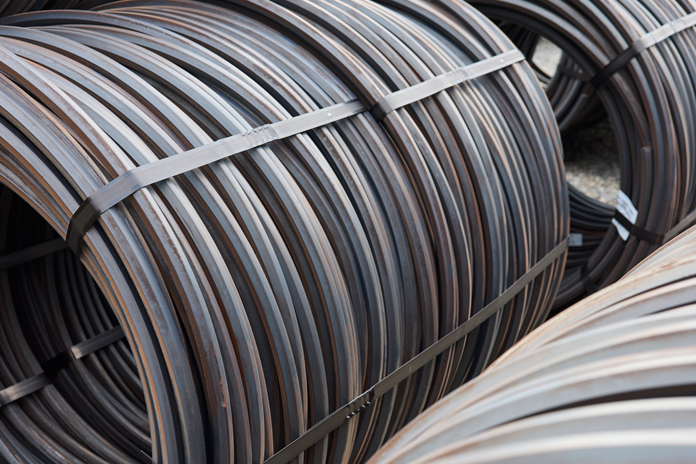It is well-known that steel can be recycled as often as desired; ; this is common practice in the steel industry. However, when higher steel qualities were required, recycling turned into down-cycling, and high-quality steel scrap became new, less valuable steel. Thanks to further developments in recycling technology, steel can once again become a model for recycling. The reclaimed steel is of a significantly higher quality than the original material.
In essence, modern steel recycling is handled the same way as the careful handling of material in an old forge. In a modern steelworks, it is equally important to know where each material is stored, to have it available for certain customers at the right moment. In the age of digitalisation, this is much easier with a catchment area for recycled material of an entire country and beyond its borders than in a forging workshop.
Swiss Steel Group (SSG), Europe’s largest steel company specialising in EAF technology, works exclusively with high-quality stainless steel scrap. This measure massively reduces the CO2 footprint compared to conventional steel production from mined iron ore. However, raw material procurement is significantly more complex. While there are only a few qualities of iron ore and pig iron and only a handful of mining companies as suppliers, the steelworks of the Swiss Steel Group have to source their raw material from all over Europe and beyond. It is incomprehensible that Europe exports steel scrap to third countries.
Swiss Steel Group creates lighthouse project
New metallurgical developments are also necessary to produce high-quality steel with high-alloy scrap. Swiss Steel Group’s metallurgical laboratory, Ugitech, in France, plays a key role in that regard. The Ugi’Ring project is one of its groundbreaking advances and is being driven forward with regional partners. The project aims to produce primary alloys from waste products such as batteries, catalytic converters, etc., to become independent of supplies of these elements from politically unstable producing countries. Ugi’Ring will be the first plant of its kind in the world and embodies the future of steelmaking, enabling the recycling of alloying elements such as old batteries, catalytic converters, electroplating sludge or filter ash from exhaust gas purification plants. Ugi’Ring is part of France’s national strategy to become independent of supplies of primary alloying elements and is being supported with public funds amounting to ten million euros.
Ensuring consistently high quality in the steel melt with scrap is much more difficult than with pure material. Pure alloying elements will still have to be used for fine-tuning, so secure access to them is essential for the production of high-alloy grades.
“Sustainable steel production based on EAF technology is part of our DNA,” explains Frank Koch, CEO of Swiss Steel Group. “We will lead the change to green steel in Europe, expand our leading position in ecological steel production and, at the same time, significantly increase efficiency. Swiss Steel Group is already one of the most efficient producers of CO₂-reduced steel. Sustainability is not only a business task for us but also a social obligation.”
wire / Hall 12 / A28




